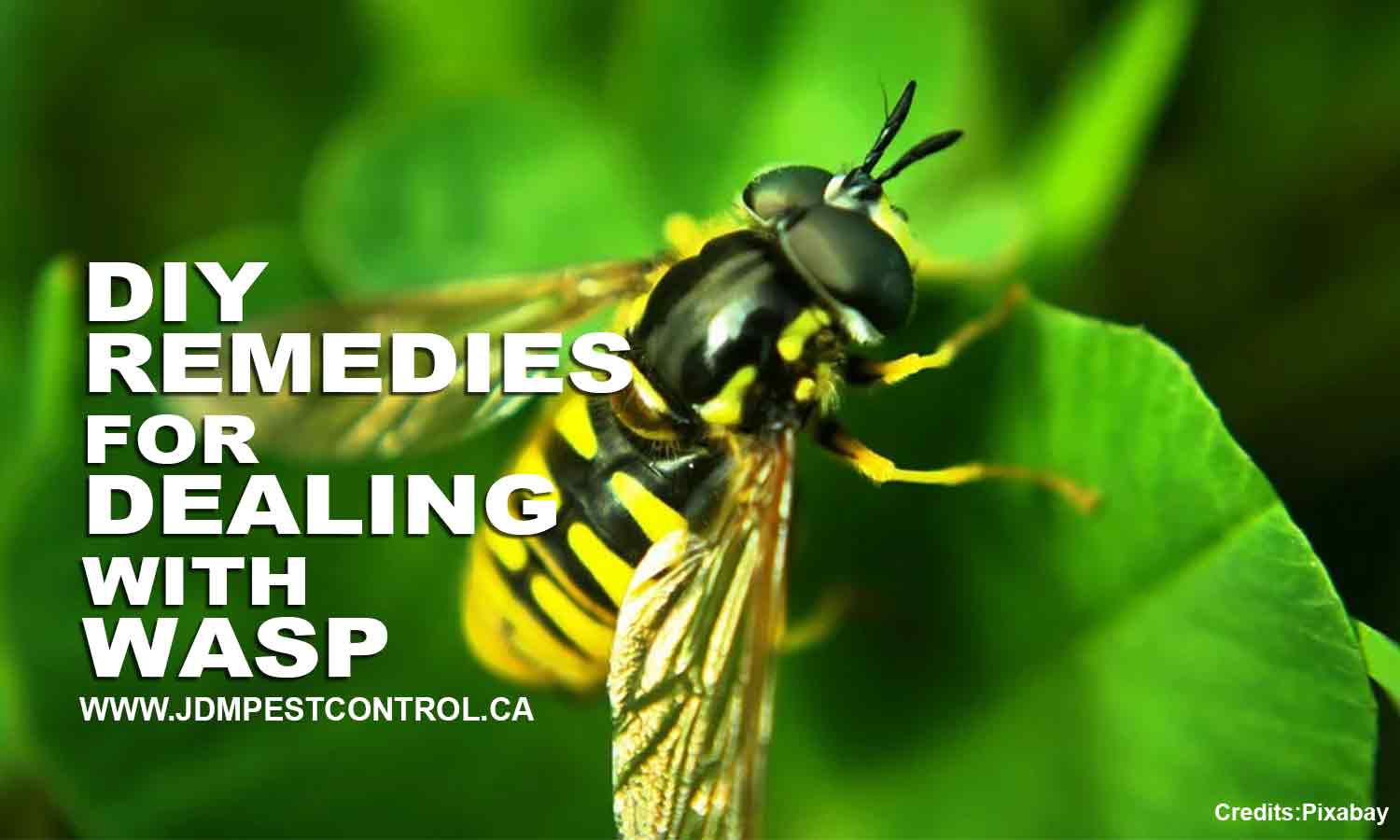Insects play a vital role in our ecosystem. They help control pests that have the potential to destroy plant and crop growth. Without wasps, there would be a gap in the food chain and we would have to use more pesticides to keep pests from damaging farms.
However, while they are indispensable in the ecosystem, they can pose real danger once they start to invade and take shelter in our homes. If you’ve spotted a nest or seen black and yellow critters flying about your home, there’s a chance you have a wasp infestation.
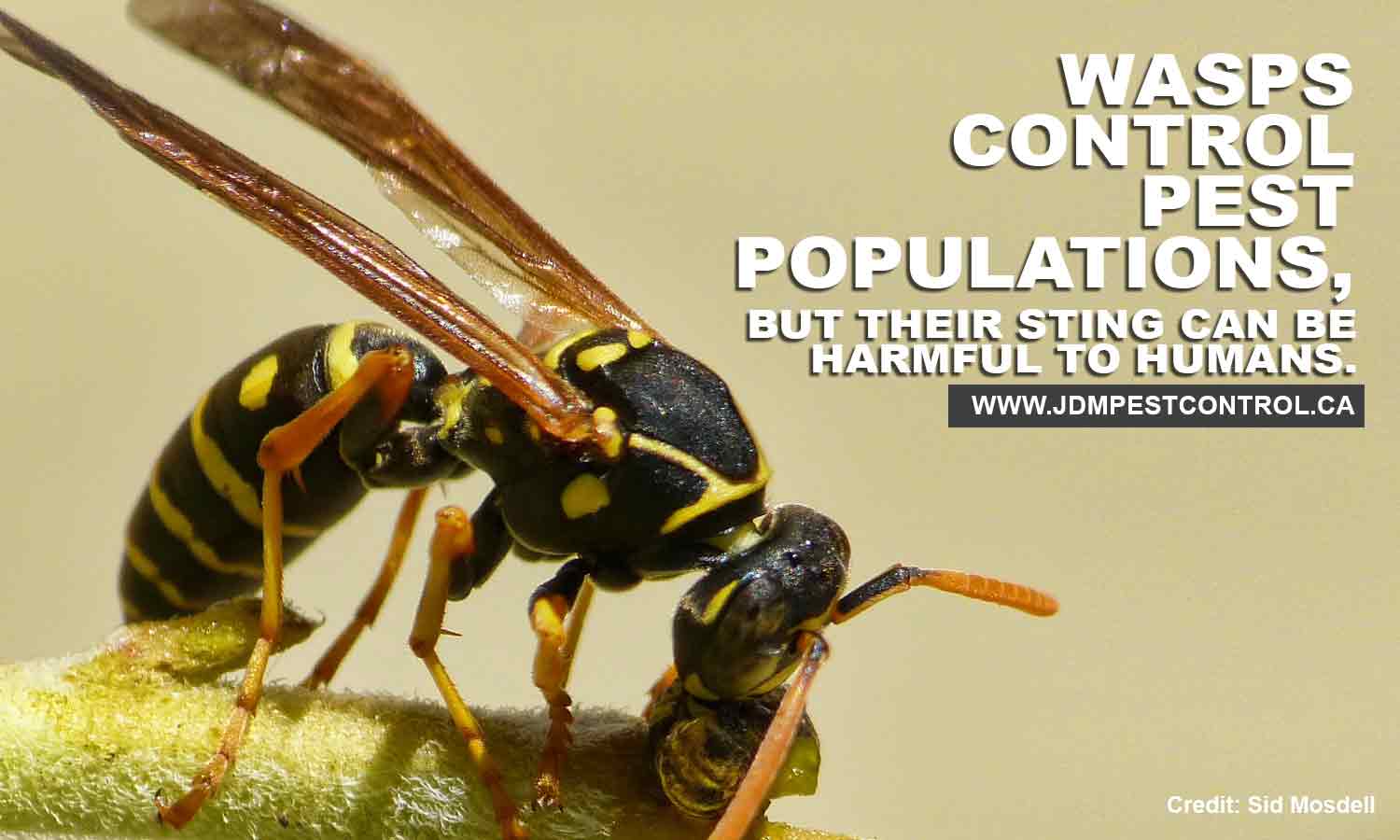
What Is A Wasp?
Canada has about 550 species of wasps. Wasps are tiny insects with body measurements ranging from 10 to 25 mm (.4 to 1.6 inches). They are common in urban and rural areas, homes, farmlands, and even in abandoned and underground buildings. Sometimes, wasps can be mistaken for bees and hornets. Wasps have wings, two antennae, an abdomen, and a thorax. They typically have black or yellow bands on the thorax.
Wasps can be harmless, or they can inflict a painful sting that might result in fatality. The most common types of wasps that can be found in the country are the yellow jacket, paper wasp, hornet, and mud daubers. Only female wasps sting; their stingers are located at the end of their thoraxes.
Knowing the exact type of wasps can make a difference in identifying the right kind of treatment or repellent you should use. When in doubt, call a certified exterminator within your area.
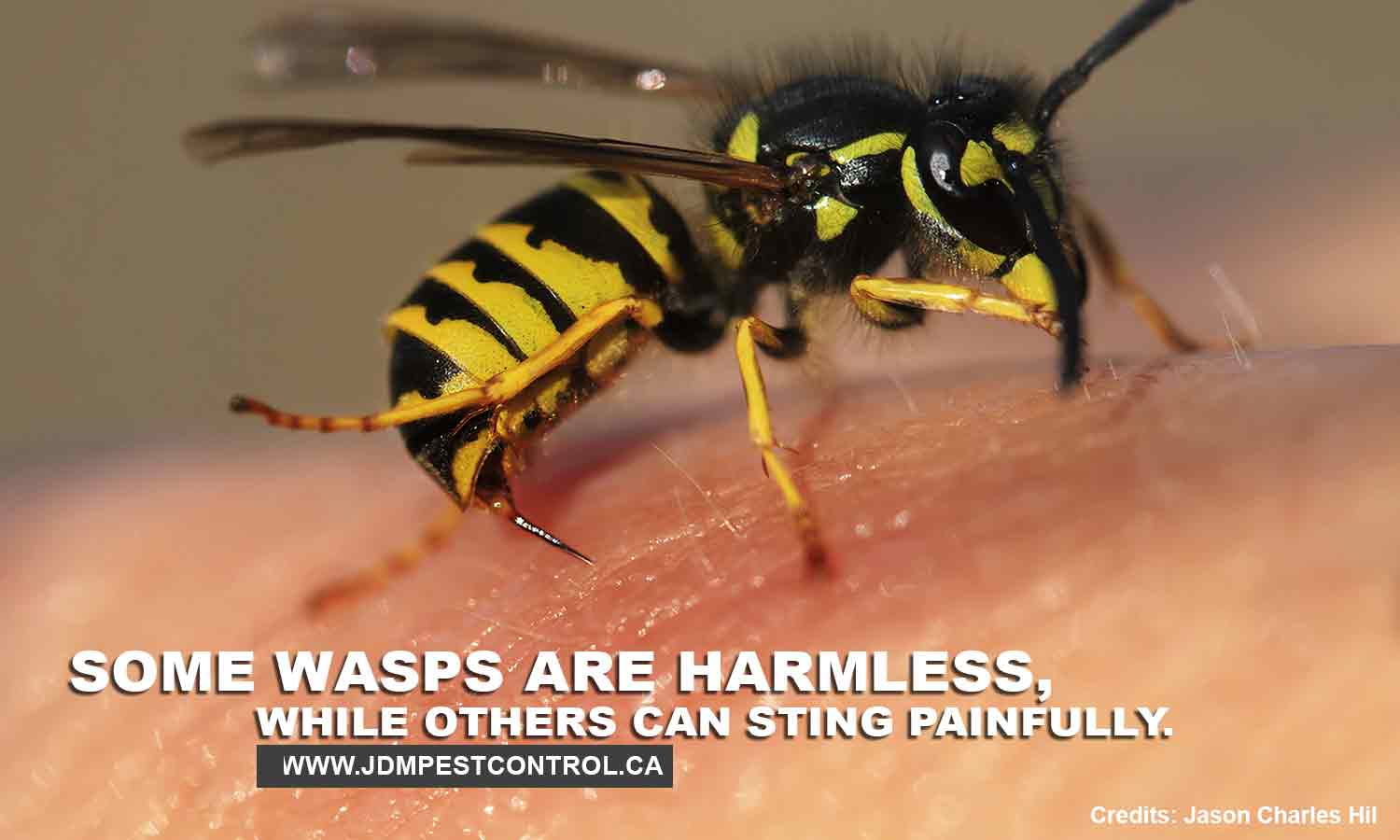
How Do Wasps Find Their Way To Your House?
Wasps don’t mystically appear in your house all of a sudden, they find a gap or crack and use it enter your home. Wasps are commonly active during springtime and the first few days of summer. They build their nests under a shade as a way of avoiding heat or cold. During such time, they get inside the house as soon as they spot an opening.
The following areas are potential entryways for wasps:
- Open doors, vents, and windows
- Deckings with weak structure
- Chimney flue
- Small openings around wood panels, shingles, and gutters
- Damaged attic and roof
- Weak vinyl siding and exposed eaves
- Bathroom exhaust vent
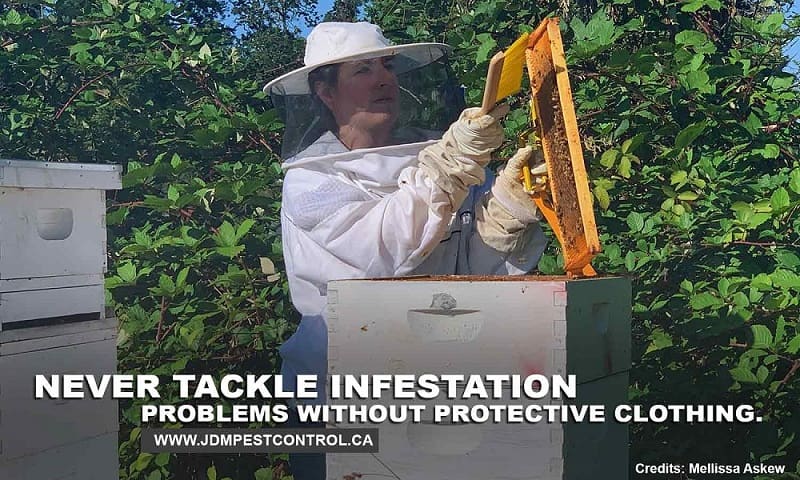
Taking Precautionary Measures
Prior to tackling wasp infestation, ensure your safety by observing these precautionary measures:
- Wear protective clothing. Prepare yourself for the possibility of getting stung. Wasps don’t attack unless they’re provoked, but it’s always best to be prepared. The best option is to wear the same protective gear as a beekeeper. If you don’t have access to that, wear gloves, closed shoes, a jacket, and long pants. Protect your eyes with goggles or glasses.
- Locate the nest. If you’ve seen a couple of wasps hovering around, it’s likely that you’re dealing with more than one colony. Identify the possible location of the nest. Make sure to check underneath your window sills and eave, the ground near plants and bushes, underneath siding or other overhangs along your house, and undisturbed areas.
- Determine the species. Observe the nest from a safe distance. The location of the nest (e.g. on a tree or a building) can provide the initial clue into the possible species. For example, a ground nest can hint to the mud dauber species, while nest made of paper may point to the paper wasp colony. Try to observe the actual wasps without drawing too close or attracting their attention. Take note of their colour and size.
- Make a treatment plan. The size of the colony, the nest location, or the number of colonies present will inform your treatment plan. Also, consider if anyone in your family is allergic to stinging insects or if anybody has already been stung.

Effective Home Remedies For Eliminating Wasps
Try these cheap DIY remedies to keep out wasps from your property simply and effectively:
- Apple cider vinegar, mint, and witch hazel – Together, Apple Cider, mint, and Witch Hazel emit a strong odour that is very repulsive to pests like wasps. Mix them in a spray bottle and apply them to areas infested with wasps.
- Soap and hot water – Dilute some dish soap in hot water to create a solution that suffocates them. Pour the solution over the wasp nest via the opening (make sure to be at a safe distance from the wasp nest, or wear protective clothing as you do this) until the nest is drenched. Leave it for about six hours and then check if there are living wasps left.
- Essential oils – Wasps dislike the scent of essential oils, and some can even kill them. Prepare 5 ml of lemongrass, peppermint, or citronella oil with 4 ounces each of vinegar and water. Put the mixture in a hose-end sprayer and spray over the entry points of the nest.
- Spicy pepper – Repeat the same procedure as with the essential oils, above. Spray the mixture on the nests to get rid of wasps.
- Sugar, apple cider vinegar, and water – Mix equal portions of water and apple cider vinegar, then add a cup of sugar. Get two plastic bottles and cut them open at the top. Join the bottles together using duct tape and place near the wasp nest. The sugar will attract the wasp to the mixture, but the vinegar will kill it.
- Nest drowning – This technique works best if the wasp nest is built on the wall and hangs loosely on the attic or roof. Prepare a cloth bag and quickly wrap the nest while sealing the mouth of the bag tightly. In a big bowl of water, submerge the bag containing the nest to cover it completely. Leave it for a few hours to ensure all the wasp inside the nest have died, then dispose of the nest.
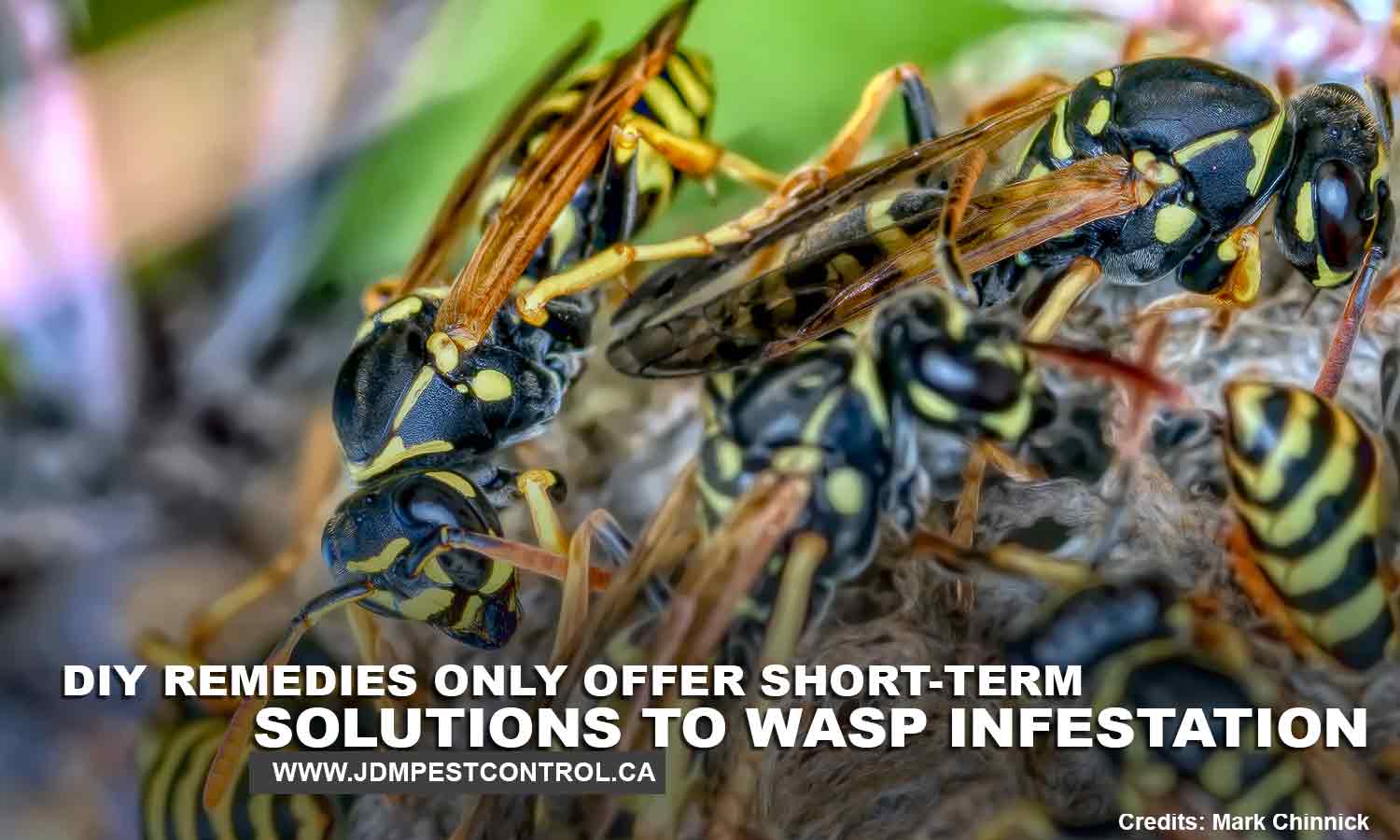
Can DIY Remedies Completely Get Rid Of Wasps?
They may be inexpensive and easy to prepare, but if not done correctly, some home remedies could expose you to getting stung by a wasp. Most only offer a short-term solution to a complex wasp infestation problem. The absence of proper tools and the application of wrong methods might even aggravate the situation.
To prevent things from getting worse, seek professional wasp removal and control services to get the clear-cut, permanent solution to wasp problems.
JDM Pest Control is always at your service to address any pest problems you may have. With a proven track record and experienced wasp pest control experts, we can help you get rid of pesky wasps to keep your home safe and comfortable for the whole family.
Call us at (416) 729-3568 for top-notch bee and wasp removal services in Richmond Hill.
